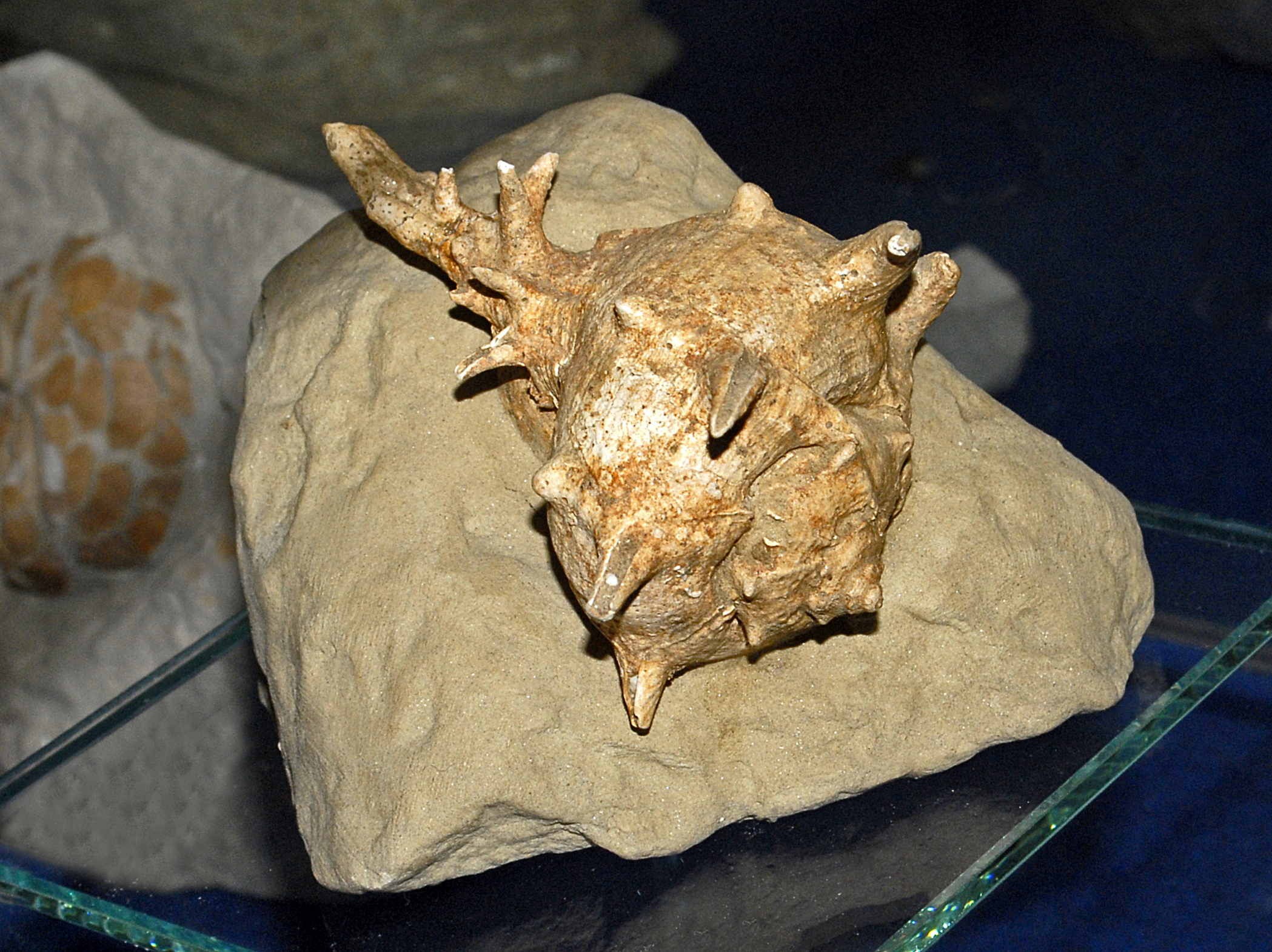Bolinus Brandaris Cagliaritanus on:
[Wikipedia]
[Google]
[Amazon]
''Bolinus'' is a
genus
Genus ( plural genera ) is a taxonomic rank used in the biological classification of extant taxon, living and fossil organisms as well as Virus classification#ICTV classification, viruses. In the hierarchy of biological classification, genus com ...
of sea snail
Sea snail is a common name for slow-moving marine gastropod molluscs, usually with visible external shells, such as whelk or abalone. They share the taxonomic class Gastropoda with slugs, which are distinguished from snails primarily by the ...
s, marine
Marine is an adjective meaning of or pertaining to the sea or ocean.
Marine or marines may refer to:
Ocean
* Maritime (disambiguation)
* Marine art
* Marine biology
* Marine debris
* Marine habitats
* Marine life
* Marine pollution
Military
* ...
gastropod
The gastropods (), commonly known as snails and slugs, belong to a large taxonomic class of invertebrates within the phylum Mollusca called Gastropoda ().
This class comprises snails and slugs from saltwater, from freshwater, and from land. T ...
mollusk
Mollusca is the second-largest phylum of invertebrate animals after the Arthropoda, the members of which are known as molluscs or mollusks (). Around 85,000 extant species of molluscs are recognized. The number of fossil species is e ...
s in the family
Family (from la, familia) is a Social group, group of people related either by consanguinity (by recognized birth) or Affinity (law), affinity (by marriage or other relationship). The purpose of the family is to maintain the well-being of its ...
Muricidae
Muricidae is a large and varied taxonomic family of small to large predatory sea snails, marine gastropod mollusks, commonly known as murex snails or rock snails. With about 1,600 living species, the Muricidae represent almost 10% of the Neogas ...
, the murex snails or rock snails.
This genus is known in the fossil record from the Miocene
The Miocene ( ) is the first geological epoch of the Neogene Period and extends from about (Ma). The Miocene was named by Scottish geologist Charles Lyell; the name comes from the Greek words (', "less") and (', "new") and means "less recen ...
to the Pliocene
The Pliocene ( ; also Pleiocene) is the epoch in the geologic time scale that extends from 5.333 million to 2.58 Fossilworks
/ref> Some species of these molluscs were known since ancient times as a source for
 The adult shells of ''Bolinus'' species can reach a size of about . They are usually pale or golden brown, thick and spiny with a long and straight siphonal canal and a rounded and broad body whorl.
They are carnivorous and predatory
The adult shells of ''Bolinus'' species can reach a size of about . They are usually pale or golden brown, thick and spiny with a long and straight siphonal canal and a rounded and broad body whorl.
They are carnivorous and predatory
Pusch, G. G. (1836-1837). Polens Paläontologie, oder Abbildung und Beschreibung der vorzüglichsten und der noch unbeschriebenen Petrefakten aus den Gebirgsformationen in Polen, Volhynien und den Karpathen, nebst einigen allgemeinen Beiträgen zur Petrefaktenkunde und einem Versuch zur Vervollständigung der Geschichte des Europäischen Auer-Ochsen. E. Schweizerbart's Verlagshandlung. Stuttgart. pp. 1-80, pl. 1-10 [1836], pp. 81-218, pl. 11-15
Jousseaume, F. P. (1880). Division méthodique de la famille des Purpuridés. Le Naturaliste. 2(42): 335-338
Muricidae Extant Miocene first appearances {{Muricidae-stub
/ref> Some species of these molluscs were known since ancient times as a source for
purple
Purple is any of a variety of colors with hue between red and blue. In the RGB color model used in computer and television screens, purples are produced by mixing red and blue light. In the RYB color model historically used by painters, pu ...
dye and also as a popular food source.
Description
Distribution
Snails within this genus mainly live along the Atlantic coast of Africa and in theMediterranean Sea
The Mediterranean Sea is a sea connected to the Atlantic Ocean, surrounded by the Mediterranean Basin and almost completely enclosed by land: on the north by Western and Southern Europe and Anatolia, on the south by North Africa, and on the ea ...
.
Habitat
They inhabit shallow water and prefer gravelled or rocky substrate.Species
Species within the genus ''Bolinus'' include: * ''Bolinus brandaris
''Bolinus brandaris'' (originally called ''Murex brandaris'' by Linnaeus and also Haustellum brandaris), and commonly known as the purple dye murex or the spiny dye-murex, is a species of medium-sized predatory sea snail, an edible marine gastr ...
'' (Linnaeus, 1758)
* ''Bolinus cornutus
''Bolinus cornutus'', or horned murex, is a predatory species of sea snail, a marine gastropod mollusk in the family Muricidae, the murex or rock snails. This species is common along the west coast of Africa, where it prefers moderately shallo ...
'' (Linnaeus, 1758)
Bolinus Brandaris Nivea Bucquoy, Dautzenberg & Dollfus, 1882
brandaris form trispinosus Locard 1886
Bolinus brandaris longispinus Coen 1914
brandaris form coronatus
brandaris form trituberculatus
brandaris form bicaudatus
brandaris form cagliaritanus
brandaris form brevis
brandaris form polii
brandaris form elongata
brandaris form coronatus x polii
brandaris form varicosus
brandaris form rubiginosus
Stigwan & Fabiod 2019
References
* Merle D., Garrigues B. & Pointier J.-P. (2011) Fossil and Recent Muricidae of the world. Part Muricinae. Hackenheim: Conchbooks. 648 pp. * Gofas, S.; Le Renard, J.; Bouchet, P. (2001). Mollusca. in: Costello, M.J. et al. (eds), European Register of Marine Species: a check-list of the marine species in Europe and a bibliography of guides to their identification. Patrimoines Naturels. 50: 180-213External links
Pusch, G. G. (1836-1837). Polens Paläontologie, oder Abbildung und Beschreibung der vorzüglichsten und der noch unbeschriebenen Petrefakten aus den Gebirgsformationen in Polen, Volhynien und den Karpathen, nebst einigen allgemeinen Beiträgen zur Petrefaktenkunde und einem Versuch zur Vervollständigung der Geschichte des Europäischen Auer-Ochsen. E. Schweizerbart's Verlagshandlung. Stuttgart. pp. 1-80, pl. 1-10 [1836], pp. 81-218, pl. 11-15
Jousseaume, F. P. (1880). Division méthodique de la famille des Purpuridés. Le Naturaliste. 2(42): 335-338
Muricidae Extant Miocene first appearances {{Muricidae-stub